
You've decided you're ready to tackle classroom learning centers but feel overwhelmed at the thought of setting them up! If those are the thoughts running around in your head, you've come to the right place. There are many benefits to having classroom learning centers so let's get them set up and ready to go!
Setting Up Your Classroom Learning Centers
When thinking about how to set up classroom learning centers in kindergarten and first grade, there are three things to consider in your layout- classroom size, the number of students at each center, and which centers you want to have in your room. A good idea is to design your layout on paper before you begin. You'll want to make sure it is an inclusive classroom with plenty of space for students and teachers to move around comfortably. You'll need clear pathways to make center rotation easy.
Classroom Size
The very first thing you'll need to consider is the size of your classroom. How big is your room? Is it big enough to have separate areas for each math and literacy center? If so, you will need to designate each learning center area with something that says “I am a center” such as:
- small table and chairs
- desk
- small rug
- shelf
- a basket on the floor
Number Of Students
The next thing you need to decide is how many students you will allow at each of your classroom learning centers. Many teachers have students work in small groups of 3-4 while other teachers will have 2 students work together as partners at a classroom learning center.
In my early childhood classroom, I tried many ways of grouping students. When I first started using learning centers, I had 4 students at each learning center. I soon found out that the noise level was too much for me. Although I tried instructing students on how to use a soft or whisper voice it was never quiet enough for me. My students visited classroom learning centers during my guided reading time and I like a very quiet room during this time.
I tried having my students work in pairs but eventually, I decided upon one student at each learning center. I found that students stayed on task and worked better alone. It cut down on fighting, arguing, and tattletales. Students enjoyed having the learning center materials to themselves and my class was quiet. This made it much easier for me to teach in small groups. If students wanted a friend to play a game or activity with, we would have special days like Friday Freedom when kids could work together.
Once you decide on the number of students, you'll need to designate this number in some way. You can do this with chairs (4 chairs at the table = 4 students allowed at a time), pictures of how many students can visit the center, or have students clip a clothespin to a card at the center (2 clothespins = 2 children allowed).
Which centers will you have in your room?
Finally, you'll need to decide which classroom learning centers you'll have in your room. Most elementary teachers plan their centers around math and literacy. A good place to start is with a minimum of 5 centers and a maximum of 10. More than 10 centers is a lot to manage and much more work for the teacher.
Begin with classroom learning centers that are easy to maintain like your library, listening center or computers. These are areas that many teachers already have in their classrooms and maintaining them throughout the year takes minimal effort. Other centers like Science, Art, STEM, Dramatic Play or Math centers may take more time to set up and get started. Save those centers to begin later in the school year.
Classroom Learning Center Ideas
1. Library Center
The library is a place where students can visit to read and enjoy books. Chances are, you already have a classroom library set up in your room! At this center, students can read with a friend, read to a stuffed animal, learn about new authors, and write book reviews. Here are some things you might need at this center:
- Shelves, a rug and soft chairs or bean bags
- A small lamp for soft lighting
- Plastic tubs with books. It's a good idea to label books so students know where each book belongs and this will keep your library neat and organized. You can grab some free classroom library labels here.
- Place this center near a bulletin board where you can create a monthly author study or display with helpful reading tips
- Display racks or a basket for special books or holiday books
- Soft seating – bean bag chairs, small couch or scoop rockers work well
- Whisper phones for students to read to themselves
- Worksheets for students to write book reports
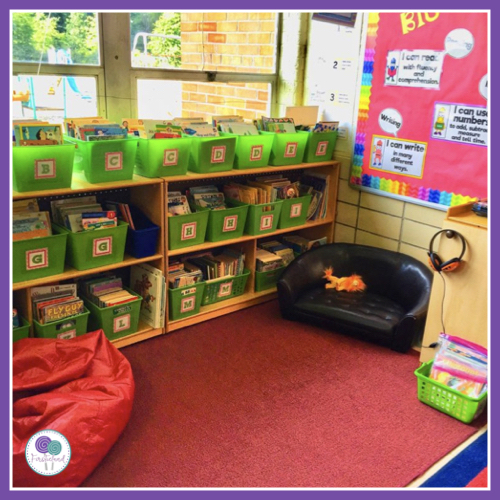
2. Listening Center
The listening center is a place for students to listen to books either by themselves or with a friend. Students can listen to books on tape, cassette, or on the internet. A great place to find books online for your listening center is Epic Books and Storyline Online. Students can write and draw about their favorite books at this center, as well. Here are some things you might need at this center:
- Books
- Cassettes or CD's or record your own using QR codes. Here's a great tutorial to help you learn how to record your own books with QR codes.
- Keep your books and tapes/CD's in individual gallon size ziplock bags
- Small tub to hold your books.
- Comfortable seating or a soft rug to sit on
- Small table with chairs for students
- Headphones
3. Word Work Or Literacy Center
At the Word Work or Literacy Center, students can practice many literacy skills. Students can practice alphabet skills, sight words, spelling words, phonics games, word and letter sorts, and other literacy activities. Here are a few things you might need at your word work or literacy center:
- Small shelf to hold materials
- Small table and chairs or a rug for students to sit on
- Trays or baskets to keep materials organized at the center
- Pocket chart, word cards, alphabet cards
- A cookie sheet with magnetic letters
- Letter stamps and stamp pads and stamping activities
- Letter beads for stringing, shoestrings or pipe cleaners
- Playdough and letter/word mats
- Alphabet puzzles and games
- Alphabet charts, mini word walls and mini sound wall
- Mini chalkboards, dry erase boards, markers, erasers, chalk
- Games for phonics, sight words, alphabet
- Letter and word sorting activities for pocket charts or magnetic trays
- Write the room activities
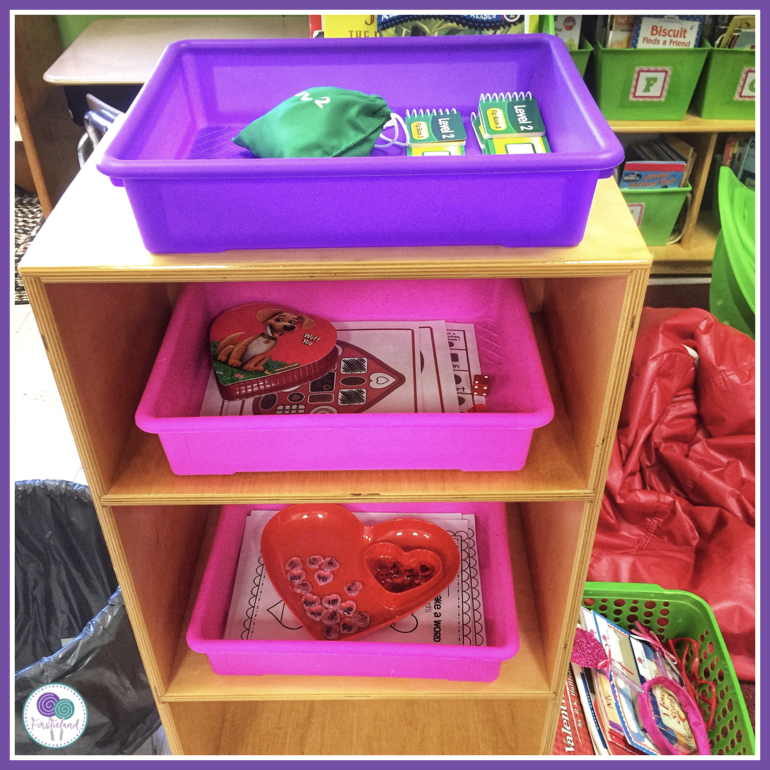
4. Big Book / Retelling Center
At this center, students can read from books or charts with enlarged text. You can use commercially made big books or make your own. This is a great place to display large poems on charts, pocket chart stories, and songs. At the Big Book / Retelling Center students will read books and charts with pointers. They can use word windows to find letters and words they know, act out stories with puppets or buddy read with a friend. They can even read non-fiction and write reports. Here are some ideas for this classroom learning center:
- Big books, charts, enlarged posters with poetry
- Pocket chart stories
- Big book stand or easel
- Large laundry basket to hold your big books
- A hook or chart stand to hold your charts and poetry.
- Puppets
- Flannel board and flannel board story pieces
- Pointers, word windows
- Seasonal props
- Materials for students to make their own puppets (paper, popsicle sticks, paper bags, tape, glue, scissors, crayons)
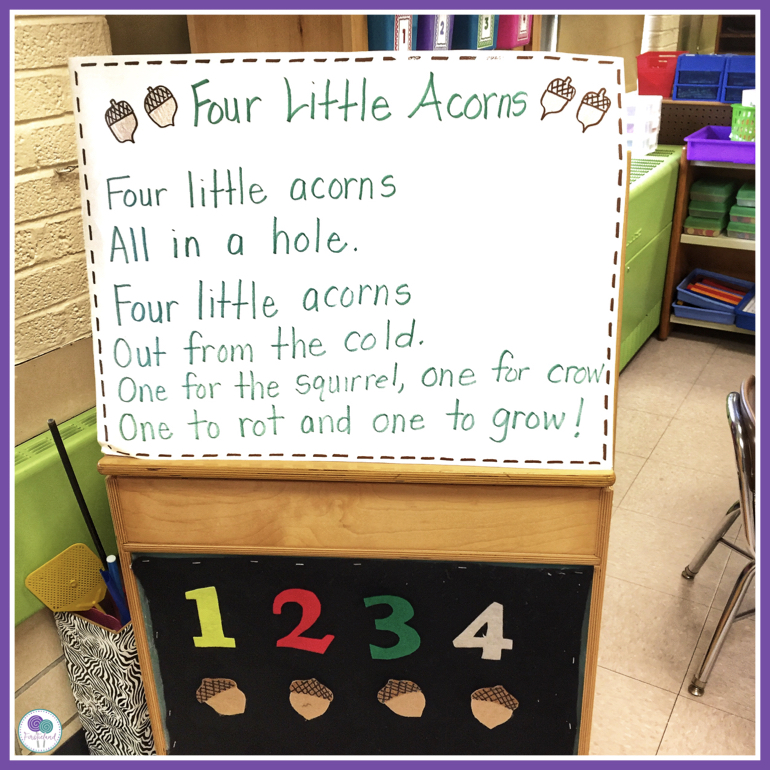
5. Writing Center
Writing center activities are the hub for all your creative writing in the classroom! Students will flock to this classroom learning center if you stock it with fun and interesting writing utensils, different types of paper, and lots of writing templates. At this center, students can write letters, make greeting cards, write stories, label pictures, write lists, practice their handwriting, write messages to friends, and more! Here are a few items to make your writing center fabulous:
- Table or desk with chairs
- Stacking trays or shelf to hold paper and writing templates
- Writing instruments – pencils, crayons, colored pencils, crayons, gel pens, fancy pens, skinny markers, holiday pencils and erasers
- Mailbox
- Small plastic drawers to keep materials
- Dray erase boards, erasers, markers, mini chalkboards, chalk
- Clipboards
- Science fair type board with writing ideas for students
- Alphabet chart
- Word books, student dictionaries
- Mini word walls
- Various sizes and colors of paper
- Blank books
- Writing templates for different genres (opinion, how to, informational…)
- Blank greeting and note cards
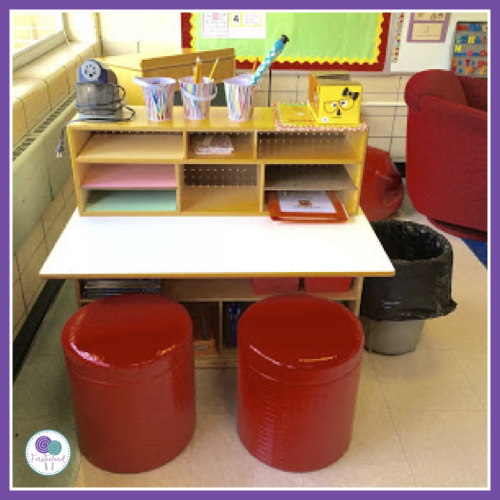
6. Spelling Center
The Spelling Center is a great place for students to practice their weekly spelling words or phonics skills. At this center, you'll see students practicing spelling words, giving friends mock spelling tests, playing word wars, and other games. Write spelling words on notecards, cut apart and have students put them back together. This is a great place to keep your weekly spelling words displayed in a pocket chart each week. Here are some things you might need at this classroom learning center:
- Small table or desk and chairs
- Stacking trays or a shelf to hold paper
- Writing instruments – pencils, colored pencils, skinny markers and crayons
- Table top or hanging pocket chart
- Magnetic letters
- Word cards – change this up to add interest by writing your words on seasonal things like pumpkin shaped cards in October or Christmas tree shaped cards in December
- Open ended worksheets for students to practice any set of words each week
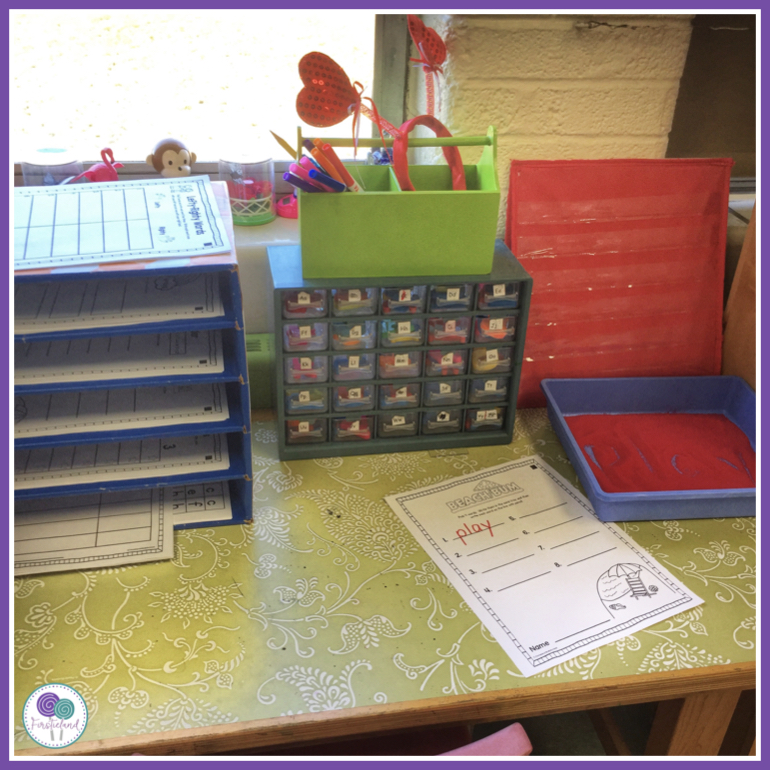
Ready to get your classroom learning centers started? Click below for everything you need to get started.
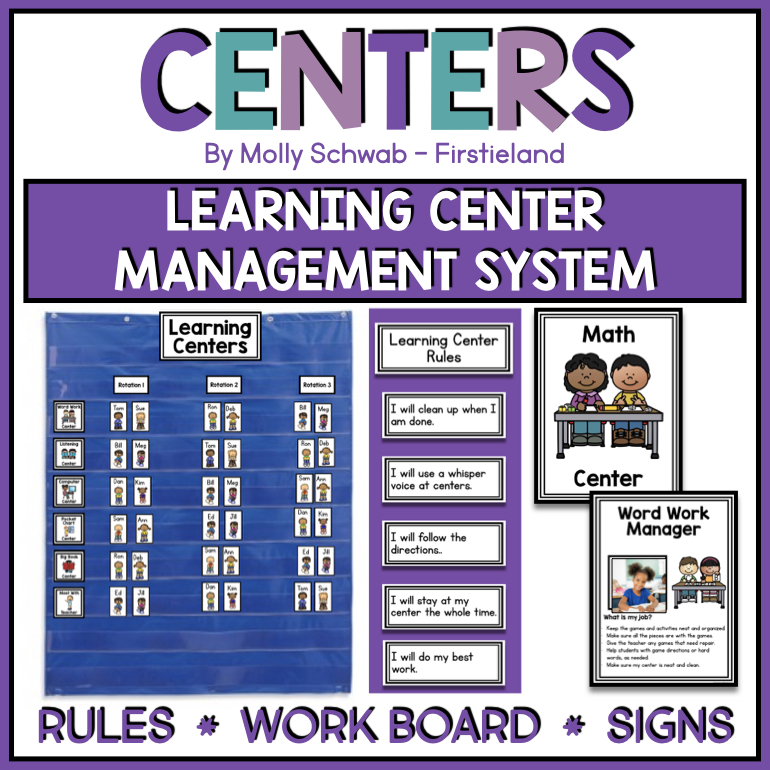
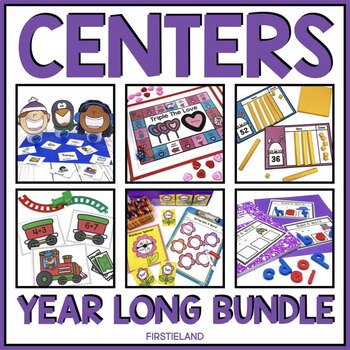
Want to know more about the benefits of math and literacy centers in your classroom? Check out this post.
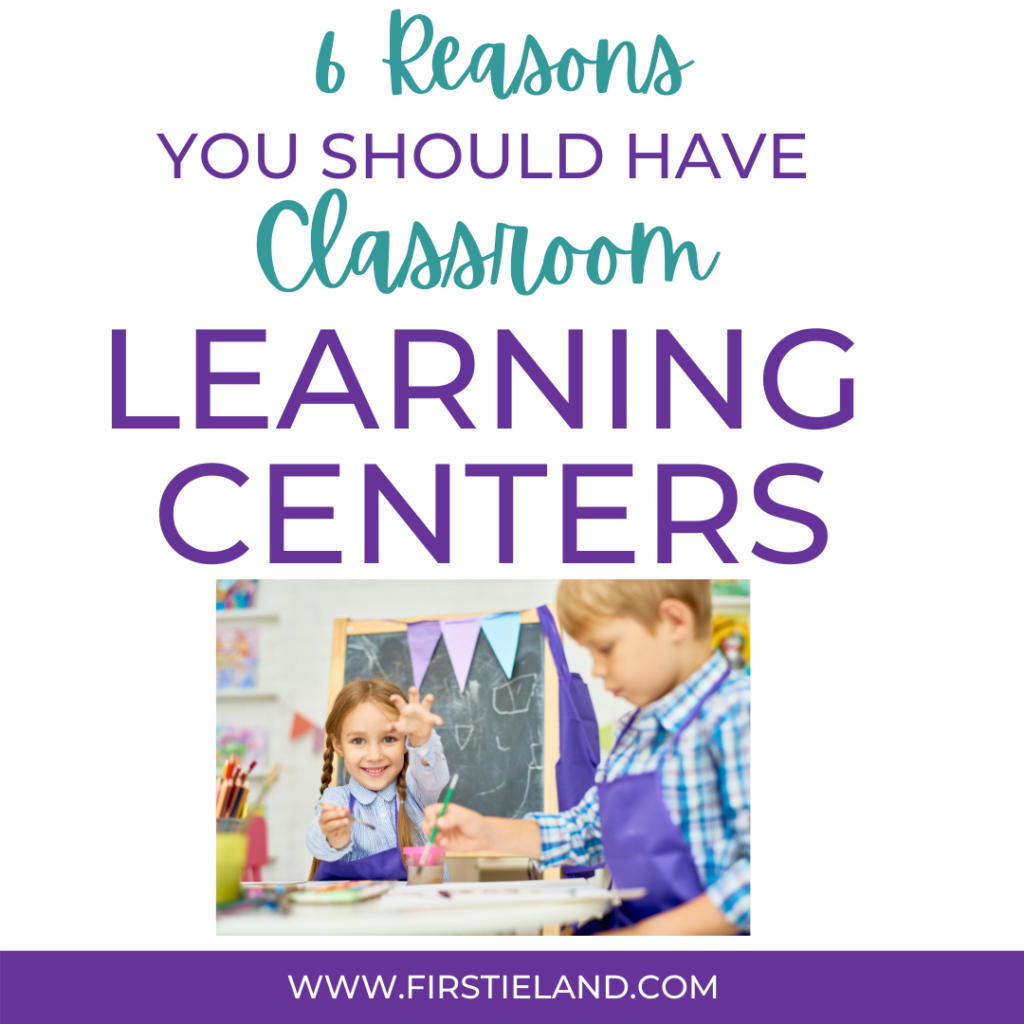

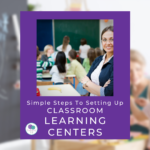
Love your classroom setup. Where did you get those big crayons hanging off the ceiling? Have been looking for them for a long time.
Oh thank you so much! I actually found them at a flea market! I wish I could help you out more….maybe try Oriental Trading or Ebay?